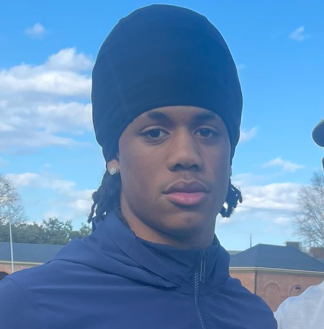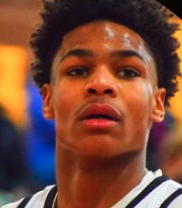Weekly Movers: Football Class of 2026 Rankings Update
The Class of 2026 football rankings just experienced one of the most dramatic weekly reshuffles in PrepRanks history, with 89.8% of ranked prospects sliding down the board and only 7.2% climbing higher.

The Class of 2026 football rankings just experienced one of the most dramatic weekly reshuffles in PrepRanks history. With 89.8% of ranked prospects sliding down the board and only 7.2% climbing higher, this week's movement signals a major recalibration that every college recruiter and prospect needs to understand right now.
The numbers tell a stark story: 2,360 players dropped in the rankings while just 188 rose. Add in 54 brand-new debuts and you have a landscape where no commitment is safe, no evaluation is final, and the next film session could rewrite a prospect's entire trajectory.
Rising Stars: Who Climbed the Board
While most of the Class of 2026 saw their stock fall, a select group of players bucked the trend. These risers share common threads that reveal what evaluators are prioritizing right now.
Elijah Fernandez, a linebacker from Battle Ground Academy in Franklin, Tennessee, sits at #849 after his latest climb. The Memphis Tigers commit represents a broader trend: Group of 5 programs getting ahead of the curve by locking down talent that Power Four schools are still evaluating. Fernandez's ability to diagnose plays and his instincts in coverage caught evaluators' attention during October film study.
The defensive side of the ball dominated the risers list. Jayden Ballard, a safety from Manchester High in Richmond, Virginia, jumped to #771 with his commitment to the West Virginia Mountaineers. His range and ball skills on the back end showed up on film repeatedly, the kind of consistent production that forces rankers to take notice. Malachi Taylor from Pickerington North in Ohio moved to #812 after committing to Ohio, showcasing the versatility at the athlete position that translates to multiple defensive roles at the next level.
Edge rushers also made gains. Kadin Fossung from Gainesville High in Georgia climbed to #703 with his commitment to Tulsa. His combination of quickness off the edge and relentless motor caught attention during the season's midpoint. Mason Wright from St. Pius X in Kansas City moved to #863 as a Wyoming commit, showing the Cowboys' ability to identify pass rushing talent before bigger programs circle back.
These risers share patterns that matter: they committed early to programs that saw their value, they produced consistently on film, and they play positions where evaluation takes time to develop. Defensive backs and edge rushers require full-season tape to properly assess, which explains why this position group saw the most upward mobility.
Notable Fallers: Reading the Drops
The other side of this story reveals an uncomfortable truth: even Power Four commitments aren't immune to ranking drops. This week's fallers include several high-profile pledges that signal a broader evaluation tightening.
Ryan Mosley from Carrollton High in Georgia dropped to #345 despite his Georgia Bulldogs commitment. Wide receivers faced particular scrutiny this cycle, with five of the top 15 fallers playing the position. The abundance of receiver talent nationwide and the position's sensitivity to route-running refinement means small technique issues can trigger significant ranking adjustments.
Jasen Lopez from Chaminade-Madonna Prep in Miami fell to #624 as a Florida State Seminoles pledge. The drop reflects how even prospects at elite high school programs face constant re-evaluation. When evaluators watch hundreds of hours of film each week, everyone's tape gets graded on the same curve.
The pattern among fallers shows several common factors: many play wide receiver or offensive line, positions where technique details matter enormously. Several remain uncommitted, suggesting evaluation uncertainty that stems from limited exposure or inconsistent film. And some committed to programs facing coaching changes or scheme shifts, introducing variables that complicate projection work.
Stephen Brown from Marist in Chicago slipped to #1,112 as an uncommitted athlete. His multi-position flexibility works both ways: it creates college interest but also makes ranking difficult when evaluators can't pin down his best fit. JaQuan Stennis from Clintondale in Michigan fell to #1,322, highlighting how receiver prospects in non-traditional markets face extra scrutiny when their competition level gets questioned.
Fresh Faces: Debuts Making Statements
The 54 new entries to the rankings reveal which programs are doing the best ground-level scouting work. These debuts weren't accidents, they were discoveries from diligent evaluation.
Jocques Felix from Cardinal Ritter College Prep in St. Louis entered at #735 as an Iowa State commit. The defensive lineman represents a trend: Midwest programs finding talent in their own backyards before coastal schools notice. Nate Fleming from Battle Ground Academy debuted at #798 with his Vanderbilt commitment, showing the Commodores' strong Tennessee recruiting.
Several debuts came with Group of 5 commitments, revealing these programs' willingness to offer early when they identify talent. Jacob Miller from Penney High in Missouri entered at #815 as a Northwestern pledge, while Isaiah Pina from South Lake in Florida debuted at #865 heading to Virginia Tech. These aren't reaches, these are calculated moves by coaching staffs who trust their evaluation process.
The specialist debuts deserve attention too. Aditya Kaul, a punter from Westminster in Atlanta, entered at #1,039 with a Stanford commitment. Van Krisiloff from Cathedral in Indianapolis debuted at #1,135 as an Eastern Michigan kicker. Specialists often enter rankings later as their roles get defined, but their presence signals the depth of this class.
Position-by-Position Movement
Breaking down the chaos by position reveals which groups experienced the most volatility. Wide receivers led the total movement with 364 ranked players, 31 rising but 325 falling. The position's depth creates intense competition where small evaluation shifts cascade into significant ranking changes.
Defensive linemen showed interesting patterns: 239 total ranked with 22 rising and 207 falling. The risers tended to be edge rushers with clear college fits, while the fallers included interior linemen whose projection depended heavily on physical development that hasn't materialized yet. Linebackers (232 total, 15 rising, 211 falling) and cornerbacks (240 total, 18 rising, 215 falling) faced similar evaluation pressures as defensive coordinators increasingly prize specific skill sets over general athleticism.
Offensive linemen split into two groups: tackles (198 total, 9 rising, 184 falling) and interior linemen (253 total, 16 rising, 230 falling). The limited riser numbers reflect how offensive line evaluation requires the most projection work. Coaches need to see technique refinement over full seasons, making midyear ranking jumps rare.
Quarterbacks showed surprising volatility with 155 total ranked, 18 rising but 134 falling. The position's evaluation complexity, scheme-specific requirements, and the reality that most teams need just one quarterback per class creates natural ranking compression. Running backs (162 total, 12 rising, 144 falling) and tight ends (169 total, 10 rising, 151 falling) sat in the middle, their rankings more stable because their roles translate more directly from high school to college.
| Position | Total Ranked | Risers | Fallers | Rise Rate |
|---|---|---|---|---|
| WR | 364 | 31 | 325 | 8.5% |
| IOL | 253 | 16 | 230 | 6.3% |
| CB | 240 | 18 | 215 | 7.5% |
| DL | 239 | 22 | 207 | 9.2% |
| S | 238 | 10 | 222 | 4.2% |
| LB | 232 | 15 | 211 | 6.5% |
| EDGE | 212 | 18 | 188 | 8.5% |
| OT | 198 | 9 | 184 | 4.5% |
| TE | 169 | 10 | 151 | 5.9% |
| RB | 162 | 12 | 144 | 7.4% |
| QB | 155 | 18 | 134 | 11.6% |
| ATH | 118 | 9 | 104 | 7.6% |
What This Movement Really Means
The 89.8% faller rate isn't random chaos. It reflects a systematic recalibration happening across the industry as evaluators move past summer camp hype toward season-long film study. Early rankings rely heavily on camp performances and testing metrics. Mid-season rankings incorporate actual game tape against real competition, which always reveals gaps between potential and production.
Group of 5 programs dominate the risers list because they offer earlier and trust their evaluations against pushback. When a Memphis or Tulsa extends an offer to a three-star linebacker in October, they're betting on film study that Power Four schools haven't completed yet. Sometimes they're right, sometimes they're reaching, but their willingness to commit resources creates opportunities for prospects who might otherwise wait months for bigger offers that never come.
The wide receiver position volatility reflects the position's technical complexity. Route running, release packages, hand technique, and tracking ability all require multiple games to properly assess. A receiver who looks elite against weak secondary competition might struggle against tight coverage. Evaluators need full-season tape to separate legitimate college receivers from athletes playing receiver in high school.
Power Four commits sliding in the rankings reveals another truth: commitment doesn't end evaluation. Coaching staffs watch committed prospects all season, and if the tape doesn't match the summer projection, the internal board rankings shift. Public rankings follow those shifts, which explains why a Georgia or Florida State commit can still drop significantly even after pledging.
Regional Patterns Worth Noting
Ohio produced multiple risers, particularly at Pickerington North and Columbus area schools. The state's combination of strong high school football and proximity to multiple college programs creates an environment where talent gets identified and refined systematically. Tennessee prospects, especially from the Nashville area, also showed up among risers, reflecting the state's growing reputation as an undervalued recruiting market.
Florida and Texas prospects dominated the debuts list, unsurprising given those states' recruiting depth. But the presence of Midwest debuts from Missouri, Ohio, and Illinois signals broader geographic scouting. As recruiting staffs expand their territories and film becomes more accessible, prospects from non-traditional markets gain exposure faster than in previous cycles.
The California presence among fallers suggests West Coast prospects face unique evaluation challenges. The time zone difference means East Coast evaluators watch their tape last. The perception, fair or not, that West Coast competition is softer means California prospects need to show more on tape to maintain rankings. When they don't produce at expected levels, they slide faster than prospects from traditional hotbeds.
Looking Ahead: What Comes Next
This week's movement sets up several storylines that will define the Class of 2026 evaluation process going forward. The risers who committed to Group of 5 programs will face questions about whether they should have waited for Power Four offers. Their responses on the field will either validate their decisions or fuel regrets about committing too early.
The fallers, especially Power Four commits, enter a critical period where their film from the final weeks of the season determines whether they stabilize or continue sliding. A strong playoff performance can reverse negative momentum. A quiet November confirms evaluator concerns and potentially triggers more significant drops.
The debuts create immediate pressure on prospects to prove they belong in the rankings at all. First impressions matter in recruiting evaluation, and these newly ranked players need to show consistency that justifies their inclusion. One good game might get you ranked, but staying ranked requires sustained production.
Position battles will intensify as the season concludes. Wide receivers need to show they can win against man coverage. Offensive linemen need to demonstrate technique refinement. Defensive backs need to prove they can cover elite competition. Every game from now until December will either confirm or challenge the rankings we see today.
The Class of 2026 remains fluid, and that's the entire point. Rankings should reflect current evaluation, not preserve summer opinions. This week's massive movement signals evaluators are doing their jobs: watching tape, comparing prospects, and making difficult calls about who projects to the next level. The prospects who rise from here will be those who produce consistently, regardless of their ranking position today.



